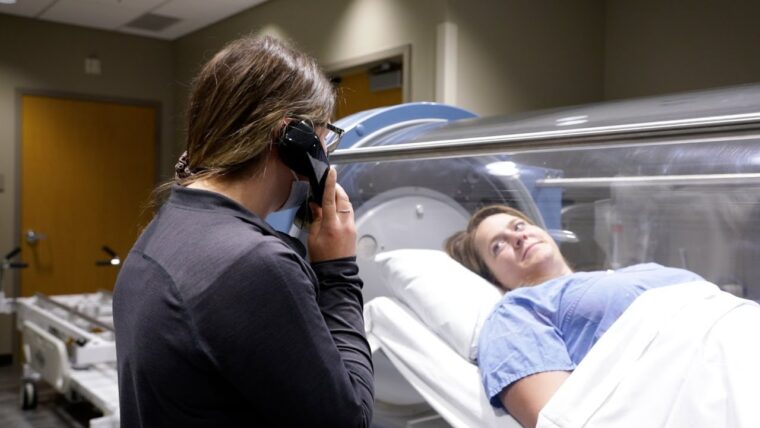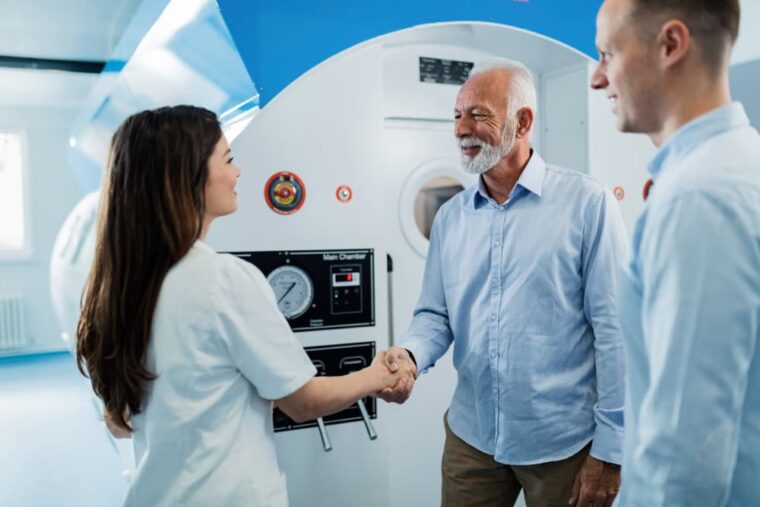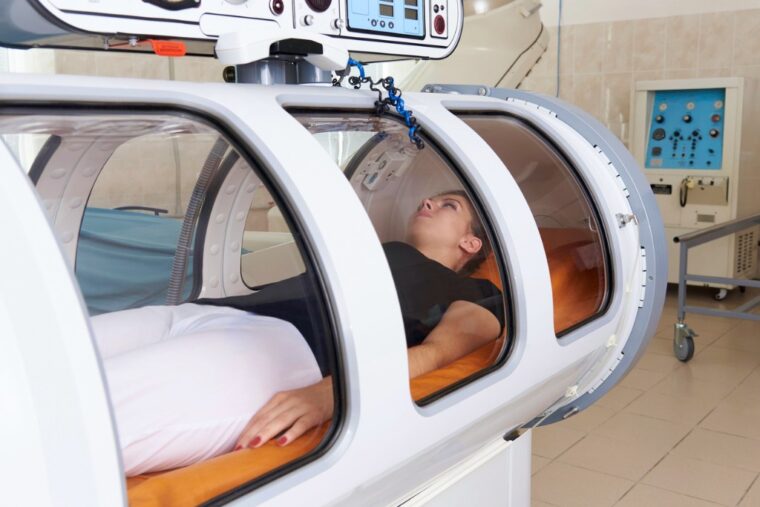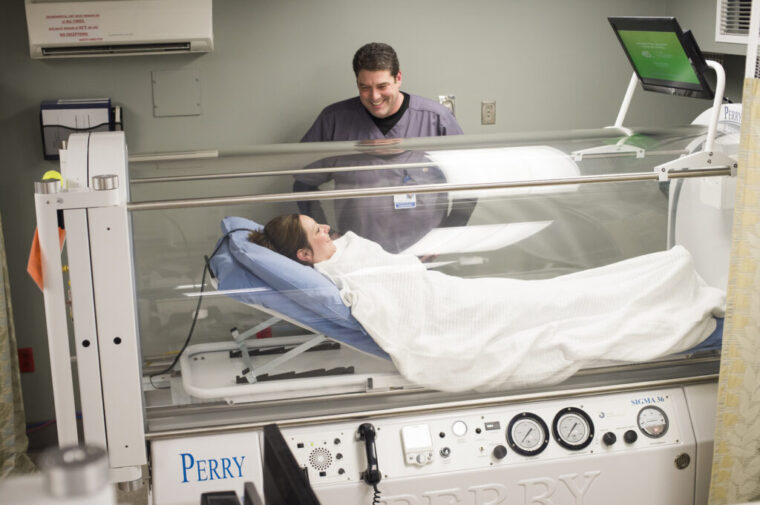Hyperbaric Oxygen Therapy (HBOT) has become a focal point in contemporary therapeutic practices, offering remarkable benefits in treating a variety of medical conditions.
Central to this therapy are HBOT chambers, sophisticated devices that deliver high-pressure oxygen. A question frequently asked by patients and enthusiasts alike is: Can you use HBOT chambers every day?
That is why we want to discuss some important and under what conditions, with a particular focus on the growing trend of hyperbaric chamber for home use and the implications of HBOT at home.
Showing the Ropes

HBOT chambers are designed to provide 100% oxygen at higher than atmospheric pressures, enhancing the body’s natural healing process. This therapy relies on the principle that under increased pressure, the body can absorb more oxygen than under normal conditions.
There are mainly two types of chambers: monoplace, which treats one person at a time, and multiplace, accommodating multiple patients. These chambers have been instrumental in treating conditions such as decompression sickness, chronic wounds, and certain infections.
Common Uses of HBOT
HBOT is used for a wide range of medical conditions. It’s effective in accelerating wound healing, especially in diabetic foot ulcers, aiding in recovery from radiation injuries, and treating infections that are slow to heal.
Moreover, there’s growing interest in the potential benefits of HBOT for neurological conditions and in sports medicine for injury recovery. The versatility of these chambers, including the option for hyperbaric chamber for/at home use, has broadened the scope of HBOT applications.
Frequency of HBOT Sessions

Medical professionals often tailor the frequency of HBOT sessions to the individual’s condition and response to therapy. While some conditions may benefit from daily sessions, others might not require such frequency. Doctors generally recommend daily sessions for acute conditions, where rapid intervention is crucial.
However, for chronic issues or wellness purposes, the frequency might be reduced. The decision on daily use is usually based on a thorough evaluation of the patient’s health status and the specific goals of the therapy.
Factors Influencing Treatment Frequency
Several factors influence the recommended frequency of HBOT sessions. The severity and type of the medical condition being treated are primary considerations. For instance, more severe cases might necessitate more frequent sessions.
Additionally, the patient’s overall health, age, and ability to tolerate the treatment play a crucial role in determining the frequency. Personal schedules and the availability of hyperbaric chamber for/at home use also factor into this decision, offering more flexibility for regular treatments.
Doctor’s Tips for Optimal HBOT Usage
Doctors emphasize the importance of balancing session frequency with treatment efficacy. While frequent sessions can be beneficial, they should not compromise the patient’s comfort or lead to adverse effects.
Treatment goals, such as wound healing or recovery from neurological injury, significantly influence the frequency and duration of HBOT sessions. It’s crucial to align the treatment plan with these objectives to achieve the best outcomes.
Monitoring Response to Treatment
Continuous monitoring of the patient’s response to HBOT is critical, especially when sessions are frequent. Doctors advise watching for signs of improved healing or recovery, as well as any adverse reactions.
Adjustments to the frequency of sessions may be required based on this ongoing assessment. Patients using HBOT at home should be particularly vigilant and maintain regular communication with their healthcare provider.
Safety Considerations and Best Practices

Finally, we want to address some considerations and best practices.
Potential Risks
While HBOT is recognized for its therapeutic benefits, it’s imperative to be aware of the potential risks, especially when the therapy is frequent.
Common risks include:
- Ear and Sinus Pressure Changes: Due to the increased pressure in HBOT chambers, patients may experience discomfort in the ears and sinuses. It’s similar to the sensation felt during airplane ascents and descents. This can usually be managed with techniques to equalize ear pressure, but it’s important to be cautious, especially for those with a history of ear problems.
- Sinus Discomfort: This may occur due to the pressure changes and the high oxygen environment. Maintaining hydration and using decongestants (if advised by a doctor) can help alleviate this discomfort.
- Oxygen Toxicity: Though rare, prolonged exposure to high levels of oxygen can lead to oxygen toxicity, a condition that can cause lung and central nervous system issues. This risk underscores the importance of strictly adhering to the recommended duration and frequency of HBOT sessions.
- Claustrophobia: For some individuals, being in a confined space can trigger claustrophobia. It’s important for such patients to communicate their concerns to their healthcare provider, who can suggest coping strategies or alternative therapies.
Best Practices for HBOT Sessions
To ensure safety and maximize the effectiveness of HBOT, several best practices are recommended:
- Adherence to Prescribed Schedule: Following the treatment schedule as prescribed by a healthcare professional is crucial. This includes the duration and frequency of sessions to avoid complications such as oxygen toxicity.
- Equipment Operation and Maintenance: For those using HBOT at home, understanding and following the operational guidelines of the hyperbaric oxygen machine is vital. Regular maintenance checks are necessary to ensure the equipment functions safely and effectively.
- Comfort and Safety Inside the Chamber: Patients should wear comfortable clothing and avoid bringing any prohibited items into the chamber, such as lighters or electronic devices, which could pose a fire risk due to the high-oxygen environment.
- Pre- and Post-Treatment Care: Staying hydrated before and after sessions can aid in preventing sinus discomfort. Additionally, patients are advised to avoid alcohol and certain medications that may interact with the treatment. Consulting with a healthcare provider for a comprehensive list of such medications is important.
- Communication with Healthcare Providers: Regular communication with healthcare professionals is key, especially for those undergoing HBOT at home. This includes reporting any discomfort, side effects, or concerns experienced during or after the sessions.
The Bottom Line

Understanding the optimal use of HBOT chambers, whether in a clinical setting or at home, is key to maximizing the benefits of this therapy. While daily use can be beneficial for certain conditions, it’s essential to follow a doctor’s recommendations and consider personal health factors.
An individualized treatment plan, ongoing monitoring, and adherence to safety protocols are paramount in achieving the best outcomes with HBOT. As the availability and applications of HBOT continue to grow, particularly with the rise of hyperbaric chambers for at-home use, such guidance becomes even more crucial.
